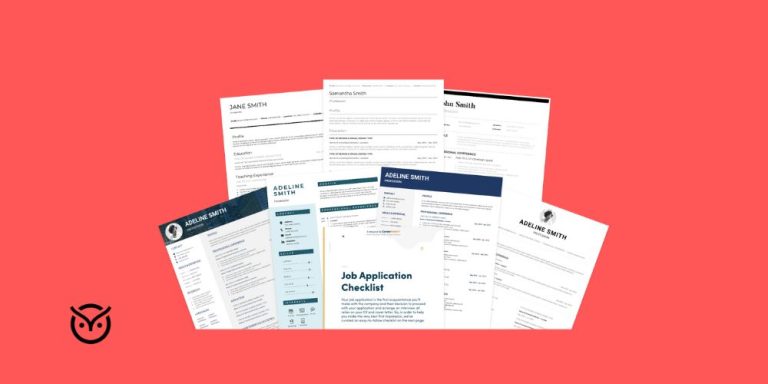How to Market Yourself as a Passive Job Seeker Without Risk

TL;DR
- A passive job seeker isn’t actively applying but is open to the right role.
- Quietly build visibility through smart networking and selective updates.
- Balance exposure with caution and avoid risky oversharing.
- Use the right channels to let opportunities come to you.
Most professionals don’t scroll job boards every night. They’re not desperate to jump ship, but if the perfect role landed in their inbox, they’d be tempted. That’s the reality of being a passive job seeker, interested but cautious. The problem is obvious: how do you get noticed without tipping off your boss or colleagues?
The good news is that you can market yourself subtly. With the right methods of recruitment on your side, you can become visible to the right people while staying invisible to the wrong ones. This blog will show you what a passive job seeker really is, the risks you need to avoid, and the safest ways to put yourself on the radar.
What Is a Passive Job Seeker?

A passive job seeker is someone who isn’t sending out applications but is still open if the right role comes along. Unlike active candidates who spend time updating résumés and applying to multiple openings, passive candidates are usually already employed and content where they are, yet willing to listen when a good opportunity finds them.
Research shows that seven out of ten professionals worldwide are passive candidates, which means that a majority of the workforce falls into this category. Another survey found that 37 percent of US workers describe themselves this way. In other words, most people reading this are either passive now or will be at some point.
Understanding this distinction matters because employers use different strategies when recruiting passive candidates. While job boards work well for active seekers, companies focus on passive sourcing and attracting passive candidates through personal outreach, referrals, and targeted approaches.
It’s also why recruiters talk about active vs passive candidates. Active candidates are easier to spot but may face more competition. Passive candidates, on the other hand, are considered a targeted group for job opportunities because they often bring stable experience, consistent performance, and aren’t applying everywhere. Knowing what the phrase passive candidate means gives you clarity on where you stand in the market and how to navigate it without risk.
What Is a Passive Job Seeker?
Risks Passive Job Seekers Face

Being a passive job seeker comes with hidden risks. You’re not shouting “I want a new job” from the rooftops, but a small misstep can still make your employer suspicious.
One of the biggest dangers is visibility. Updating your LinkedIn headline with “Open to Work” can feel harmless, but it’s one of the easiest ways to signal you’re searching. Even if you select the private setting, colleagues and managers can sometimes infer your intentions from sudden profile changes.
There’s also the issue of timing. If your résumé suddenly pops up on job boards, competitors, or even your current HR team might see it. Many companies now use advanced tools in the talent acquisition process that scrape job sites and networks to keep an eye on market movement. That means your quiet passive application could land back on your manager’s desk.
Finally, there’s the risk of reputation. Posting too openly on social media about wanting a new role can look unprofessional. Recruiters understand the balance between passive candidates vs active candidates, but your employer might not. What feels like healthy career exploration to you might feel like disloyalty to them.
How to Market Yourself Without Risk

So how do you signal interest without giving yourself away? The trick is subtle marketing. This is how you can make it work:
1. Refresh your profile quietly
You don’t need to announce your search. Instead, fine-tune your LinkedIn summary, skills, and portfolio to highlight current achievements. Recruiters actively use the platform to find employees on LinkedIn, and small updates make you more discoverable without raising flags.
2. Lean into networking
Most opportunities for passive sourcing come through people you know. Industry events, alumni groups, and online communities are safe spaces to show interest. A coffee catch-up with the right contact is far less risky than blasting out résumés.
3. Use selective disclosure
When speaking with recruiters, it’s smart to clarify you’re a passive job seeker. Recruiters are used to it and often prefer it. By positioning yourself as someone curious but not desperate, you instantly stand out.
4. Target niche opportunities
Don’t spray your résumé everywhere. Instead, focus on companies and roles that match your long-term goals. Recruiters looking at a targeted group for job opportunities often appreciate candidates who are selective, as it suggests confidence and clarity.
5. Keep social signals low-key
You don’t have to write “I’m looking” posts. Instead, share industry insights, thought leadership, or updates on projects. This builds credibility and puts you in front of the right people, all without tipping off your boss.
Signs You’re Marketing Yourself Too Loudly (Red Flags)

The difference between putting yourself out there and coming off as too obvious can be small. A few signs can show when you’re pushing things a little too hard.
Sudden résumé activity everywhere
Uploading your CV to multiple job boards at once can feel efficient, but it’s a dead giveaway. Employers often monitor these channels as part of their methods of recruitment.
Frequent profile edits
Changing your LinkedIn headline weekly, adding new skills overnight, or suddenly connecting with dozens of recruiters signals something’s up.
Posting about job hunting
Writing posts like “Excited to explore new opportunities” may attract recruiters, but it can also alert your team. Remember, passive candidate meaning is “interested but discreet,” not “broadcasting availability.”
Taking calls during office hours
Recruiters know it’s hard to schedule, but constantly stepping out for “personal calls” doesn’t go unnoticed.
Over-engaging with competitors
Commenting on or liking every update from rival companies can create suspicion internally.
The aim is to be visible without creating too much noise. Recruiters say the most effective ways to source candidates come from simple signals such as an updated résumé, a polished profile, and steady professional connections. If you keep your approach subtle, you’ll stay a passive job seeker instead of looking like someone actively searching.
Signs You’re Marketing Yourself Too Loudly — Red Flag Puzzle
Drag each action into the correct zone: Red Flag or Safe Signal. You’ll get instant feedback.
Actions
Red Flag
Safe Signal
Best Channels for Passive Job Seekers to Get Noticed

For a passive job seeker, visibility is everything, but the right kind of visibility. Instead of risky public announcements, you need to focus on channels that highlight your expertise while keeping things professional. These are the best ways you can do it safely:
1. LinkedIn (but with caution)
This is still the top place recruiters use to find employees on LinkedIn. Instead of turning on the “open to work” banner, optimize your profile in subtle ways. Add recent projects, update your headline with skills instead of job-seeking signals, and engage with industry content. This makes you searchable without raising alarms.
2. Professional associations and niche forums
Many industries have targeted communities where conversations are more about knowledge-sharing than open recruiting. By participating in discussions, you position yourself as part of a targeted group for job opportunities recruiters often look for. It’s networking in disguise.
3. Recruiter relationships
Talking to recruiters doesn’t have to look like you’re desperate to leave your job. Approach it as simple career exploration. Recruiters spend much of their time figuring out how to engage passive candidates, so they’re already used to those conversations. Even one informal coffee meeting can create opportunities you’d never get from sending out dozens of résumés.
4. Employee referrals
One of the most effective ways to source candidates is still word-of-mouth. Companies often rely on staff referrals to tap into networks of reliable professionals. As a passive candidate, nurturing relationships with colleagues, ex-managers, or friends in the industry can quietly bring you closer to opportunities.
5. Content and thought leadership
Posting thoughtful commentary, short articles, or sharing industry insights builds your brand without announcing a search. It positions you as credible and informed. Employers looking at active vs passive candidates will see you as someone confident in your expertise rather than desperate for work.
6. Direct company research
Instead of applying widely, you can follow companies that align with your values. When new roles appear, you can step in early. This approach shows employers you’re intentional, which is a key factor in attracting passive candidates, and it helps you avoid the noise of generic applications.
Best Channels for Passive Job Seekers — Fit Finder
Your Situation
Your Personalized Ranking
Conclusion
Being a passive job seeker doesn’t mean staying invisible. It means playing it smart. With the right mix of subtle profile updates, thoughtful networking and cautious engagement, you can show up on the right radar without putting your current role at risk. Quiet confidence beats loud signals every time.






